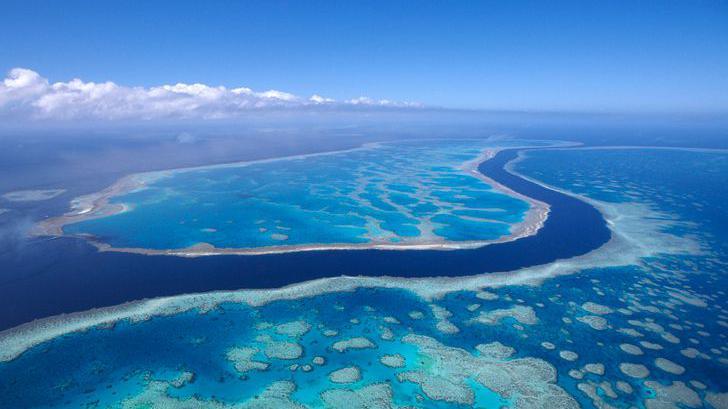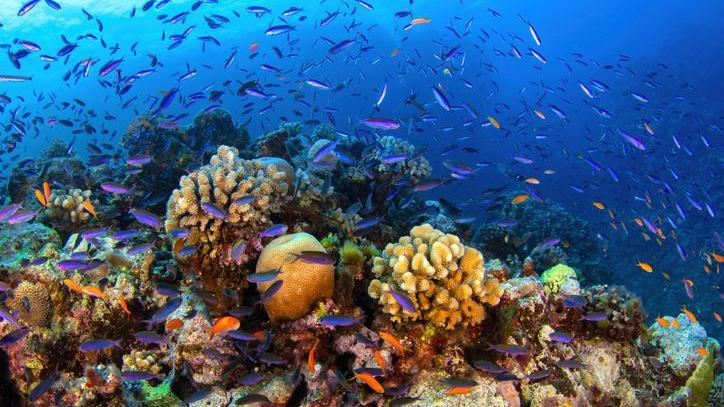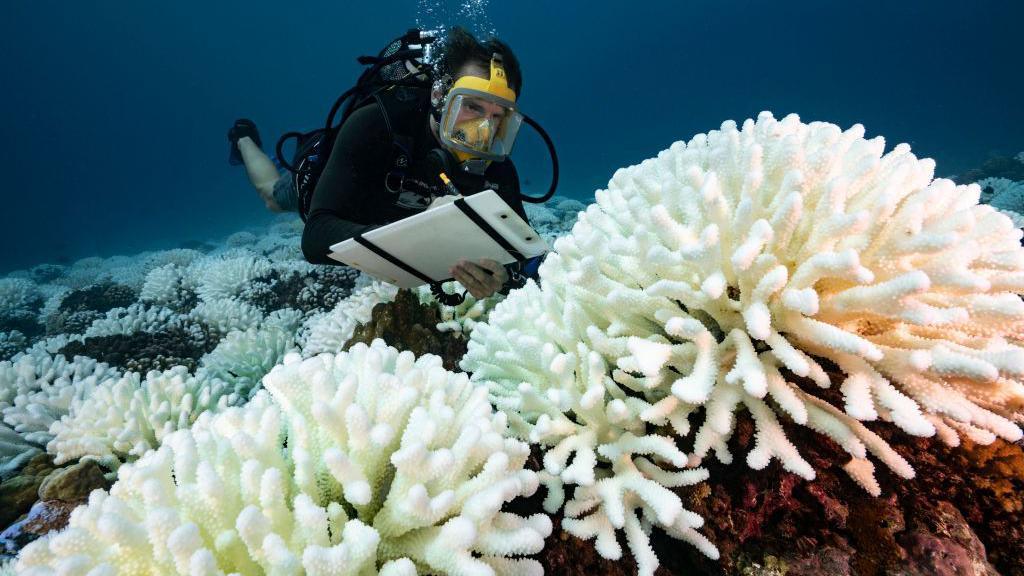Scientists discover 'catastrophic' levels of coral bleaching at Great Barrier Reef

The Great Barrier Reef has over 900 islands stretching for over 2,600 kilometres
- Published
Scientists have found that coral bleaching on Australia's Great Barrier Reef has reached "catastrophic" levels.
More than 40% of corals monitored near an island in the southern reef were killed last year, according to a new study.
Experts are calling it the most "severe and widespread bleaching" to ever hit the area.
Coral bleaching, caused by rising temperatures, weakens and potentially kills the corals, which are an important part of the marine ecosystem.
More like this
World's largest iceberg on crash course with remote British island
- Published23 January
How climate change is forcing humans and polar bears together
- Published23 January
What did scientists find at the Great Barrier Reef?

Coral reefs are home to around a quarter of the world's marine species
Coral reefs are vital for lots of plants, animals and people, but warming oceans can lead to coral bleaching which seriously damages the delicate ecosystem - the balance of all the different living things in one place.
Bleaching is seen as the biggest threat to the Great Barrier Reef - the world's largest coral reef system.
A team of scientists from the University of Sydney in Australia decided to take a closer look at how bleaching was affecting the reef, given record-breaking ocean heating in 2023.
They tracked the health of 462 coral colonies at the university's research station at One Tree Island over a period of more than five months from February 2024.
They discovered that 370 colonies became bleached - and by the time the study ended, 44% of the bleached colonies had died.
In addition, some species developed disease, which also can kill the coral.
Professor Maria Byrne, who led the study said the findings show the "urgent need for action to protect coral reefs, which are not only biodiversity hotspots but also crucial for food security and coastal protection."
She explained: "The southern Great Barrier Reef, despite its protected status, was not immune to the extreme heat stress that triggered this catastrophic bleaching event."
Professor Ana Vila Concejo, who also worked on the study, added: "As the Great Barrier Reef faces increasing threats from climate change, the study calls for a collaborative approach to conservation that involves local communities, scientists and policymakers."
What is coral bleaching?
Watch: What is coral bleaching?
Many types of coral have a special relationship with tiny plant algae - called zooxanthellae - that live in the coral.
These tiny algae are important because they produce about 90% of the food that coral needs to grow.
Coral bleaching happens when sea temperatures get too high or low, causing the coral to get 'stressed out' and the algae leave the coral.
When the algae leaves, the coral is left without its main source of food and it turns white.

When bleaching occurs, the corals turn white and lose their colour
The Great Barrier Reef is a Unesco-listed World Heritage site due to its "enormous scientific and intrinsic importance" as one of the most biodiverse ecosystems in the world but Unesco says that not enough is being done to protect the reef.
The Great Barrier Reef Marine Park Authority, which manages the reef, says the outlook for the icon is "very poor" due to climate change.
